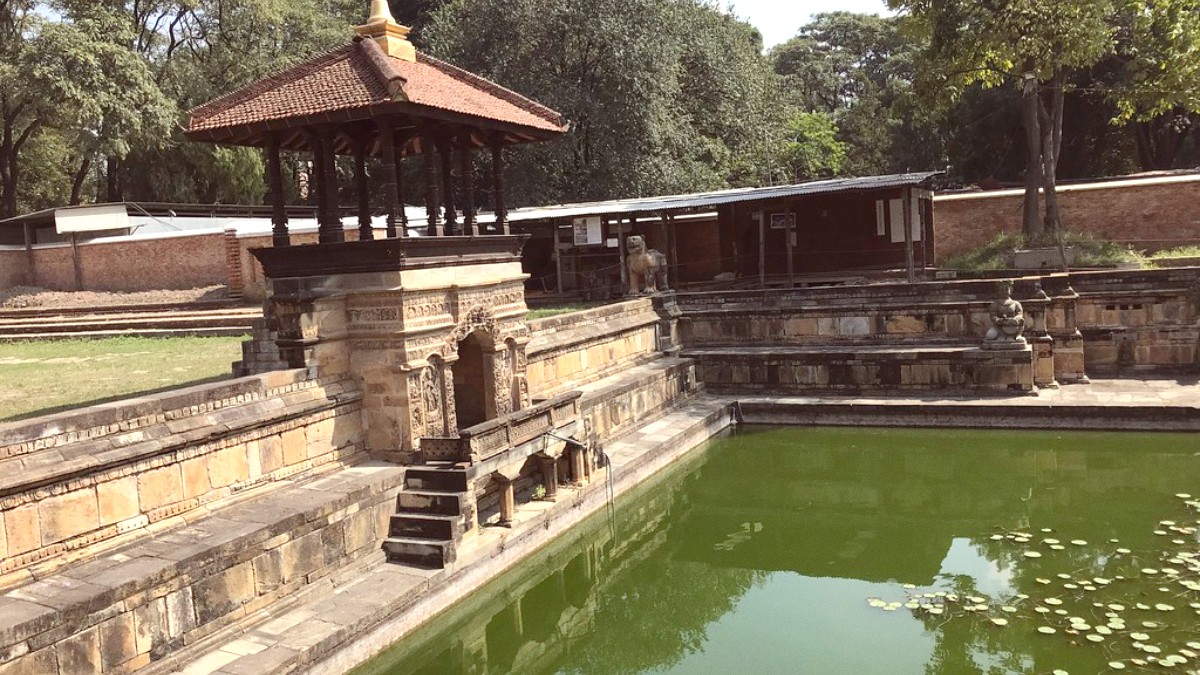
Around The Kathmandu Valley, Nepal
Your visit to Patan will likely center around its UNESCO World Heritage Site, Patan Durbar Square, but the city holds much more to discover.
Beyond the main square, intricate temples, serene stupas, and local workshops invite exploration.
The museum provides valuable historical context to the art and architecture found in the square and across the Kathmandu Valley.
While Patan Durbar Square is a living historical site with continuous occupation, there are no distinct archaeological ruins separate from the existing structures.
The entire old city of Patan, beyond the immediate confines of the Durbar Square, functions as a historical district.
Kumbeshwar Temple, Mahabuddha Temple, and Ashoka Stupas are significant religious sites showing deep Buddhist roots.
Various statues and monuments within Patan Durbar Square commemorate past Malla kings and important deities.
The city's history is embedded within its standing temples, palaces, and courtyards.
Patan is an urban center, and its main attractions are cultural and historical. However, some green spaces and natural escapes exist nearby.
Godawari Botanical Garden, a short drive south of Patan (approx. 15 km), offers a peaceful escape from the city bustle. It features a diverse collection of flora, walking paths, and picnic spots.
Within Patan itself, smaller community gardens or courtyards provide limited green space amidst the dense urban fabric.
No major natural wonders are found directly within Patan. For panoramic mountain views of the Himalayas, day trips to nearby hill stations like Nagarkot or Dhulikhel are recommended.
Not applicable to Patan. Wildlife viewing opportunities in Nepal are mainly found in national parks like Chitwan or Bardia.
Patan is landlocked; there are no beaches or natural lakes for swimming within the city.
These natural escapes require traveling outside the city, typically as day trips.
A peaceful escape with diverse flora, walking paths, and picnic spots, located a short drive south of Patan.
Nagarkot or Dhulikhel offer panoramic mountain views of the Himalayas (requires travel outside Patan).
For wildlife viewing (rhinos, tigers), travel to Chitwan or Bardia National Parks, which are not near Patan.
Beyond the widely known landmarks, Patan holds numerous hidden gems.
The city's layout and surrounding areas present opportunities for different types of exploration, from rural villages to intimate photographic moments.
Discover authentic cultural aspects by venturing into lesser-known community spaces.
Bungamati and Khokana are traditional Newari villages a short drive south of Patan (about 10 km).
Many small local temples and community squares (choks) exist within the residential parts of Patan.
Beyond the main square, the narrow, lived-in alleys of Patan provide intimate street photography opportunities.
These hidden courtyards often contain small, ancient shrines, stupas, and water spouts, offering moments of quiet reflection.
Maximize your Patan experience by considering these points.
Patan's old city is best explored on foot to discover its hidden courtyards and intricate architecture.
Always ask permission before taking photos of individuals, especially during religious ceremonies, to show respect.
Consider visiting early morning or late afternoon to avoid crowds and for ideal lighting conditions.
The entire old city of Patan presents a historical district with narrow brick lanes and traditional Newari homes.
Explore numerous hidden courtyards (bahals) containing small shrines, stupas, and community spaces.
Observe the intricate wood and stone carvings that are hallmarks of Newari architecture throughout the city.
Consider hiring a local guide to gain historical and cultural context for the sites.
Book a Guided TourEngage with locals in the community spaces and markets for a more authentic cultural experience.
Patan Museum, housed within the royal palace, showcases extensive collections.
Patan's religious sites offer profound spiritual connections and architectural marvels.
Respect local customs and traditions when visiting religious sites and interacting with communities.
Dress modestly, especially when entering temples and religious spaces, covering shoulders and knees.
While Patan is an urban center, the surrounding Kathmandu Valley and nearby regions offer additional activities.
For those seeking active experiences, options exist a short drive from Patan.
Adventure sports are typically located in other regions of Nepal, away from Patan's urban core.
Patan is famous for its traditional Newari crafts, with workshops offering short courses or demonstrations.
These hands-on experiences provide not just skills but also cultural insights.
Learn to prepare traditional Nepali and Newari dishes.
Several guesthouses and cultural centers offer these engaging classes.
Guided food tours focusing on Newari cuisine are available in Patan.
These tours provide a comprehensive look into Patan's rich food scene.
Formal initiatives are limited in Patan city. Staying in a guesthouse or homestay offers genuine interaction.
Short Nepali language courses are available in Kathmandu.
Some hotels and cultural restaurants host traditional Nepali dance and music performances.